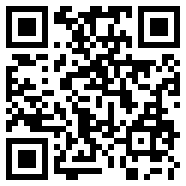|
XML-binary Optimized Packaging
XML-binary Optimized Packaging (XOP) is a mechanism defined for the serialization of XML Information Sets (''infosets'') that contain binary data, as well as deserialization back into the XML Information Set. Benefits XOP allows the binary data part of an XML Infoset to be serialized without going through the XML serializer. The XML serialization of an XML Infoset is text based, so any binary data will need to be encoded using base64. Using XOP avoids this by extracting the binary data out of the XML Infoset so that the XML Infoset does not contain binary data and the binary data can be serialized differently. Therefore, XOP can reduce the size of the serialization (since base64 encoding has approximately a 33% size overhead) and (depending on how it is implemented) might allow processing efficiencies. This size increase results in extra resources needed to transmit or store the data. Costs XOP introduces another level of processing. Therefore, it introduces extra complexity a ... [...More Info...] [...Related Items...] OR: [Wikipedia] [Google] [Baidu] |
Serialization
In computing, serialization (or serialisation) is the process of translating a data structure or object state into a format that can be stored (e.g. files in secondary storage devices, data buffers in primary storage devices) or transmitted (e.g. data streams over computer networks) and reconstructed later (possibly in a different computer environment). When the resulting series of bits is reread according to the serialization format, it can be used to create a semantically identical clone of the original object. For many complex objects, such as those that make extensive use of references, this process is not straightforward. Serialization of object-oriented objects does not include any of their associated methods with which they were previously linked. This process of serializing an object is also called marshalling an object in some situations. The opposite operation, extracting a data structure from a series of bytes, is deserialization, (also called unserialization or ... [...More Info...] [...Related Items...] OR: [Wikipedia] [Google] [Baidu] |
XML Information Set
XML Information Set (XML Infoset) is a W3C specification describing an abstract data model of an XML document in terms of a set of ''information items''. The definitions in the XML Information Set specification are meant to be used in ''other'' specifications that need to refer to the information in a well-formed XML document. An XML document has an information set if it is well-formed and satisfies the namespace constraints. There is no requirement for an XML document to be valid in order to have an information set. An information set can contain up to eleven different types of information items: #The Document Information Item (always present) #Element Information Items #Attribute Information Items # Processing Instruction Information Items #Unexpanded Entity Reference Information Items #Character Information Items #Comment Information Items #The Document Type Declaration Information Item #Unparsed Entity Information Items #Notation Information Items # Namespace Information I ... [...More Info...] [...Related Items...] OR: [Wikipedia] [Google] [Baidu] |
Binary Data
Binary data is data whose unit can take on only two possible states. These are often labelled as 0 and 1 in accordance with the binary numeral system and Boolean algebra. Binary data occurs in many different technical and scientific fields, where it can be called by different names including ''bit'' (binary digit) in computer science, ''truth value'' in mathematical logic and related domains and ''binary variable'' in statistics. Mathematical and combinatoric foundations A discrete variable that can take only one state contains zero information, and is the next natural number after 1. That is why the bit, a variable with only two possible values, is a standard primary unit of information. A collection of bits may have states: see binary number for details. Number of states of a collection of discrete variables depends exponentially on the number of variables, and only as a power law on number of states of each variable. Ten bits have more () states than three decimal dig ... [...More Info...] [...Related Items...] OR: [Wikipedia] [Google] [Baidu] |
Deserialization
In computing, serialization (or serialisation) is the process of translating a data structure or object state into a format that can be stored (e.g. files in secondary storage devices, data buffers in primary storage devices) or transmitted (e.g. data streams over computer networks) and reconstructed later (possibly in a different computer environment). When the resulting series of bits is reread according to the serialization format, it can be used to create a semantically identical clone of the original object. For many complex objects, such as those that make extensive use of references, this process is not straightforward. Serialization of object-oriented objects does not include any of their associated methods with which they were previously linked. This process of serializing an object is also called marshalling an object in some situations. The opposite operation, extracting a data structure from a series of bytes, is deserialization, (also called unserialization or un ... [...More Info...] [...Related Items...] OR: [Wikipedia] [Google] [Baidu] |
Base64
In computer programming, Base64 is a group of binary-to-text encoding schemes that represent binary data (more specifically, a sequence of 8-bit bytes) in sequences of 24 bits that can be represented by four 6-bit Base64 digits. Common to all binary-to-text encoding schemes, Base64 is designed to carry data stored in binary formats across channels that only reliably support text content. Base64 is particularly prevalent on the World Wide Web where one of its uses is the ability to embed image files or other binary assets inside textual assets such as HTML and CSS files. Base64 is also widely used for sending e-mail attachments. This is required because SMTP – in its original form – was designed to transport 7-bit ASCII characters only. This encoding causes an overhead of 33–37% (33% by the encoding itself; up to 4% more by the inserted line breaks). Design Each Base64 digit can take on 64 different values, encoding 6 bits of data. Which characters are chosen to ... [...More Info...] [...Related Items...] OR: [Wikipedia] [Google] [Baidu] |
MIME
Multipurpose Internet Mail Extensions (MIME) is an Internet standard that extends the format of email messages to support text in character sets other than ASCII, as well as attachments of audio, video, images, and application programs. Message bodies may consist of multiple parts, and header information may be specified in non-ASCII character sets. Email messages with MIME formatting are typically transmitted with standard protocols, such as the Simple Mail Transfer Protocol (SMTP), the Post Office Protocol (POP), and the Internet Message Access Protocol (IMAP). The MIME standard is specified in a series of requests for comments: , , , , and . The integration with SMTP email is specified in and . Although the MIME formalism was designed mainly for SMTP, its content types are also important in other communication protocols. In the HyperText Transfer Protocol (HTTP) for the World Wide Web, servers insert a MIME header field at the beginning of any Web transmission. ... [...More Info...] [...Related Items...] OR: [Wikipedia] [Google] [Baidu] |
SOAP
Soap is a salt of a fatty acid used in a variety of cleansing and lubricating products. In a domestic setting, soaps are surfactants usually used for washing, bathing, and other types of housekeeping. In industrial settings, soaps are used as thickeners, components of some lubricants, and precursors to catalysts. When used for cleaning, soap solubilizes particles and grime, which can then be separated from the article being cleaned. In hand washing, as a surfactant, when lathered with a little water, soap kills microorganisms by disorganizing their membrane lipid bilayer and denaturing their proteins. It also emulsifies oils, enabling them to be carried away by running water. Soap is created by mixing fats and oils with a base. A similar process is used for making detergent which is also created by combining chemical compounds in a mixer. Humans have used soap for millennia. Evidence exists for the production of soap-like materials in ancient Babylon around 280 ... [...More Info...] [...Related Items...] OR: [Wikipedia] [Google] [Baidu] |
Message Transmission Optimization Mechanism
A message is a discrete unit of communication intended by the source for consumption by some recipient or group of recipients. A message may be delivered by various means, including courier, telegraphy, carrier pigeon and electronic bus. A message can be the content of a broadcast. An interactive exchange of messages forms a conversation. One example of a message is a press release, which may vary from a brief report or statement released by a public agency to commercial publicity material. History Roles in human communication In communication between humans, messages can be verbal or nonverbal: * A verbal message is an exchange of information using words. Examples include face-to-face communication, telephone calls, voicemails, email etc. * A nonverbal message is communicated through actions or behaviors rather than words, such as conscious or unconscious body language. In computer science There are two main senses of the word "message" in computing: messages be ... [...More Info...] [...Related Items...] OR: [Wikipedia] [Google] [Baidu] |


